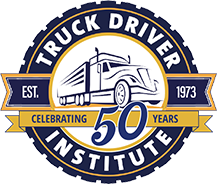Winter Driving Tips from a Truck Driver

Through the ice, the snow, the sleet and the cold, winter driving tips can help you stay safe on potentially treacherous roads. Even highly skilled, expertly trained drivers can run into trouble during the winter months, when exposed highways are subject to unpredictable changes in the weather and vehicles become statistically more likely to experience mechanical problems and failures. Knowing the specifics of how to prepare and what to watch out for will help you steer clear of whatever issues winter may bring.
Winter Driving Tips to Know
Here are some winter driving tips that detail both proactive and reactive approaches to staying timely and safe behind the wheel of your rig during this season.
Be Vigilant About Visibility
Many accidents stem from impaired visibility; keeping your view clear on all sides is paramount. Here’s a tip: turning up the air conditioning helps to defog windows because it acts as a dehumidifier even if you don’t need the extra cold. Additionally, on the exterior of the vehicle, be sure to regularly shave any frost away from all windshields, windows, mirrors, lights and reflective tape. Make sure to keep both a stockpile of deicing chemicals as well as a functional scraping tool/snowbrush on hand.
Avoid Hard Braking
This tip is absolutely crucial! When it comes to winter driving, hard braking is a huge (but understandable) mistake that many drivers inevitably make when thrown into a panic. Break early whenever possible by watching out for telltale brake lights ahead of your vehicle; otherwise accelerate and decelerate with care and caution. If a slide begins to occur, knowing how to properly correct it will help both you and your vehicle avoid serious harm. Instead of braking, attempt to turn into the slide without overcorrecting.
Listen to the Forecasts
Whether it’s tuning your vehicle’s radio to receive local weather alerts or doing an online pre-travel scan of upcoming road conditions, listening to (and respecting) the forecasts is a must. Winter weather remains unpredictable but luckily lots of professionals devote their careers towards announcing which roads are more hazardous than others throughout the season. Take advantage of these sources and plan your route accordingly!
Understand Where Ice Likely Lurks
All roads are not created equal; some sections may prove to be more hazardous than others. Be wary of entrance and exit ramps, steep inclines, intersections, and bridges, which almost always ice before the roadways. In general, sharp turns should be avoided and treated with care.
Ice is still a possibility even if you’re experiencing rain instead of snow. As the saying goes, “when the wipers come on, the cruise goes off.” Black ice can be especially invisible atop asphalt; paying attention to tire spray will help you deduce when the roads have started to freeze. If the liquid tire spray coming from the car(s) in front of you has started to decrease, it is possible that the roads are icing over.
Aim for Ample Following Distance
Even though lots of sources provide differing opinions on which precise following distance constitutes best practice (anywhere from five to fourteen seconds—one second for every 10 feet of vehicle length plus an additional second for safety), it’s always better to shoot for larger following distances over smaller ones. In the event that ice has covered the roadway, you’ll want to give yourself lots of spatial leeway should your wheels suddenly lose traction on the pavement.
Weatherproof Your Vehicle
Weatherproofing is a great proactive approach to ensuring your safety before hitting the highway. From synthetic oil to, yes, cat litter, this comprehensive guide will help you learn the ins and outs of the weatherproofing process to get your rig ready to battle the elements. In this case, failing to prepare is preparing to fail.
During the weatherproofing process, it’s always a wise idea to stash some sort of emergency kit inside your truck. This may include first aid materials, emergency food and water, road flares and/or extra warm layers.
Avoid High Speeds
The basic motto is that going slow means staying safe, even if you’re already behind deadline due to weather-related delays. Despite your responsibility as a trucker, your wellbeing and the wellbeing of other drivers should always come first. You may have to drive below the speed limit if conditions worsen during your journey, or even pull over altogether until the nasty weather subsides. Overall, the possibility of fishtailing or sliding is significantly mitigated by cutting back on your regular mph.
Adhering to this winter driving tip will undoubtedly supplement the safety that all the other aforementioned tips provide. By the same logic, all of the other tips completely lose their efficacy whenever high speeds are involved. Remember, at best, an accident will ultimately delay you far more than travelling at a wholistically slower pace.
Winter Driving Tips Make the Difference
When it comes to truck driving best practice, the list extends far beyond a few cursory winter tips. Even though respecting basic precautions (like seatbelts and speed limits) can feel second nature to those who have been on the road for decades, it’s always humbling to remember why these provisions matter even more during winter’s reign.
According to the Federal Highway Administration, roughly one-fourth of weather-related accidents occur on snowy or icy roads, resulting in over 116,000 yearly injuries. By taking pride in safety measures as essential components of the trucking experience, both you and your fellow drivers can help cultivate a road culture based around highway stewardship and an inspiring belief in the mutual right to safe passage.
TDI: Training for All Four Seasons
If you enjoyed these handy winter driving tips, consider getting on the road with us at Truck Driver Institute, where we’ve been proudly keeping our drivers safe and successful since 1973. Come snow or shine we provide the best quality commercial training for novice drivers interested in making truck driving their full-time career.
With our three-week CDL training program facilitated by incredibly skilled instructors, you’ll join the tens of thousands of drivers trained by TDI who continually brave the elements to serve the trucking industry nationwide. Call 1-800-848-7364 or contact us online to shift your next career into gear.
Get Started
Get your Class A CDL in our friendly, supportive CDL training program. TRAIN with experienced instructors – multiple good-paying, secure job choices with benefits available for eligible graduates. EARN $700 – $1000+ / week to start as a truck driver. Get started today by filling out the form below. We look forward to hearing from you!
